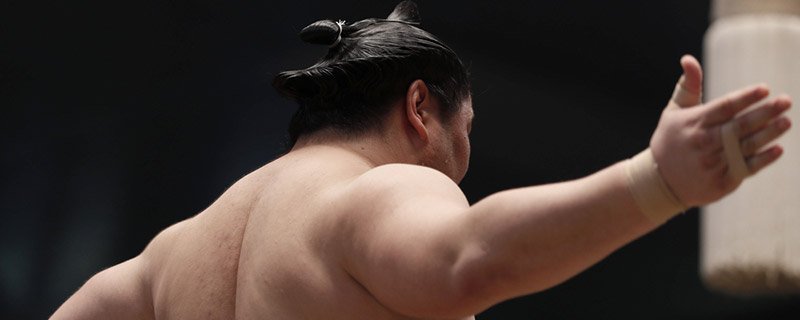Sports

Sports are a big part of the Japanese culture. Even hundreds of years ago, the people practiced a number of sports for recreational and enjoyment purposes.
The following are the most popular traditional and modern sports in Japan:
Sumo
A full-contact, combative sport that originated several hundred years ago as a ritual to please the Shinto gods, sumo wrestling is the national sport of Japan.
Sumo wrestling rules are quite simple: two wrestlers fight in a ring (4.55 metres in diameter) and the one left standing inside the ring, without allowing any part of his body to touch the outside of the ring, wins. These bouts usually last for only one round, just a matter of seconds. The winner is declared by a referee or judge.
The professional sumo wrestling scene in Japan is governed by the Japan Sumo Association. Every year, there are six 15-day tournaments held:
- Tokyo – January, May, September
- Osaka – March
- Nagoya – July
- Fukuoka – November
There are also regular sumo matches held in different cities, particularly in the Ryogoku district of Tokyo, which is known for its sumo stables, a place where wrestlers train, sleep, eat, and do other day-to-day activities.
Baseball
Introduced to Japan by American expatriate Horace Wilson in 1872, baseball is Japan’s most beloved sport. It is very commonly played by elementary school children through to adults, who treat it as an enjoyable hobby and pastime.
In Japan, there are various baseball tournaments held every year in both the amateur and professional levels.
Junior and senior high schools all over the country participate in a series of tournaments to get the chance to represent their respective prefectures in national tournaments held at the Hanshin Koshien Stadium every March (Spring Koshien) and August (Summer Koshien). These events are so popular that local television networks air several matches, from the qualifying rounds to the finals.
The professional baseball league in the country, called the Nippon Professional Baseball or NPB, was established in 1936 and, because of its rapid growth, it was divided into two different circuits in 1950 — the Central League (consisting of six established clubs) and the Pacific League (consisting of six new clubs). The two teams that win their respective leagues face each other in the finals, known as the Japan Series.
Football (Soccer)
Football arrived in Japan during the Meiji Period when advisors from the West, hired by Japan’s government, introduced their sports to the locals, including baseball and basketball.
In 1917, the Tokyo Shukyu-dan was established and became the first football club in Japan. A couple of decades later, the Japanese national football team was formed and has become one of the top football clubs in the world, clinching tickets to the FIFA World Cup tournaments in 1998, 2002, 2006, 2010 and 2014.
In addition to FIFA, the Japanese national football team has also competed in other international tournaments, such as the Copa America, East Asian Football Championship, and Confederations Cup. It achieved its highest world ranking ever in February 1998 when it placed 9th.
Basketball
Basketball in Japan has had its ups and downs through the years, but a revival in the last two decades has made it one of the most followed sports in the country — thanks to Takuya Kawamura and Yuta Tabuse, two highly respected Japanese basketball players who helped bring Japan to the international stage; and to mangaka Takehiko Inoue, creator of the all-time bestselling manga “Slam Dunk”, for spreading the love and passion for this sport through his masterpiece.
Japan’s first professional league was called the Japan Basketball League, which was made up of two divisions: the Super League or Division 1 and the Japan League or Division 2. In 2012, the JBL teams joined the National Basketball League or NBL, a new professional league established by the Japan Basketball Association, which resulted in the dissolution of the JBL.
Today, there are 12 teams that make up the NBL and they play a total of 55 games each in the regular season.
Japan also has a men’s national basketball team that is one of the best in Asia, qualifying for the FIBA Asia Championship 25 out of 26 times and winning the event twice. In 2006, Japan hosted the FIBA World Championship, where it finished in 17th place.
Martial Arts
- Aikido – One of the less rough martial arts, aikido is a sport that is popular among females and older people. It believes in the principle that fighting is a means of protecting one’s self without causing severe harm and injuries to the attacker. It is a great sport for physical and mental fitness.
- Karate – A popular martial art even outside Japan, karate is a practical type of sport that only needs one’s hands and fists for combat.
- Kenjutsu – Referring to all forms of Japanese swordsmanship during the pre-Meiji Era, kenjutsu came from the samurai warriors during Japan’s feudal times. It is translated as “the technique or method of the sword”.
- Kendo – Japan’s own version of fencing, kendo is a martial art that came from kenjutsu, the samurai’s most important and essential martial art. In a kendo match, the participants wear a special kind of protective gear and use bamboo swords to hit the other’s hand, chest, or head.
- Judo – Created in Japan in 1882, judo is a combative type of martial art that uses three basic techniques — striking, grappling, and throwing. It is an excellent sport to learn for self-defence. Its creator, Kano Jigoro, started a school called Kodokan that still operates to this day and is regarded as the best institute for Judo learning and mastery.
- Jujutsu – A close combat type of martial art, jujutsu is a sport that aims to defeat an opponent carrying a weapon with the use of no weapon at all, or just a small one. It employs various grappling techniques, such as striking, biting, kicking, holds, trapping, throwing and gouging.












